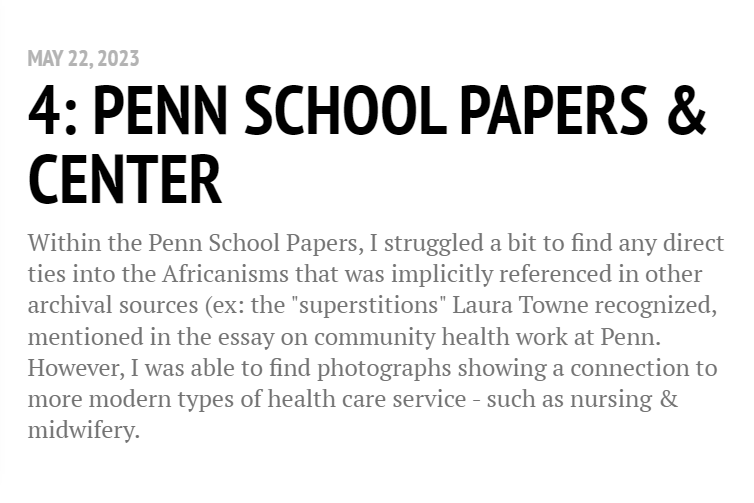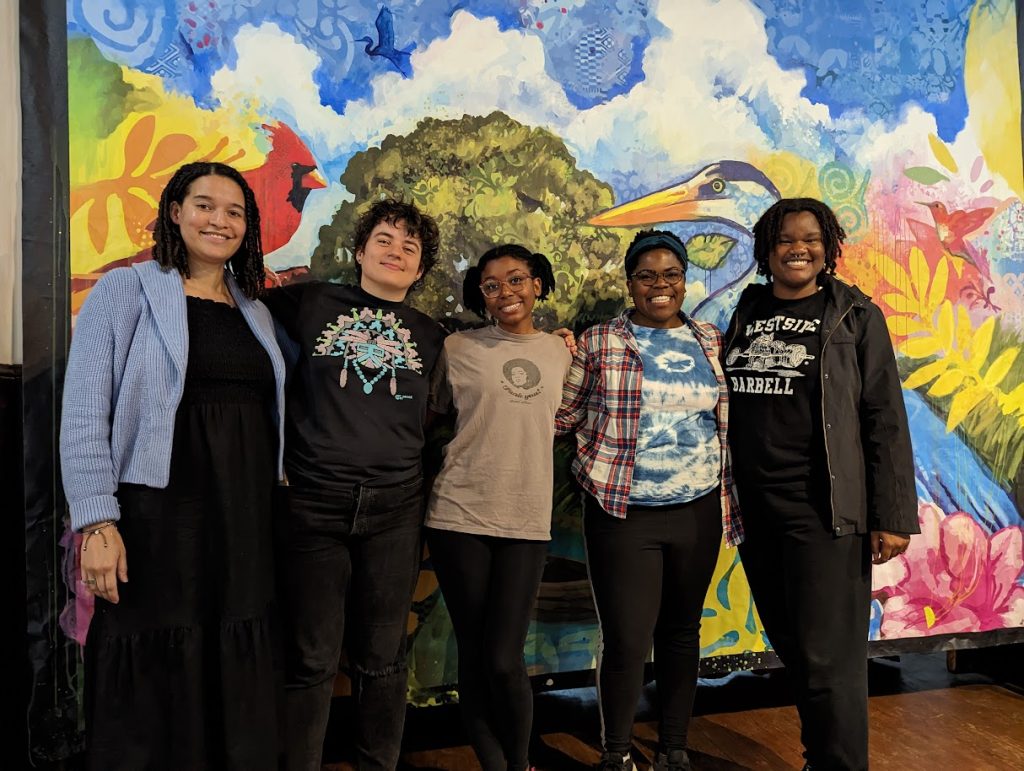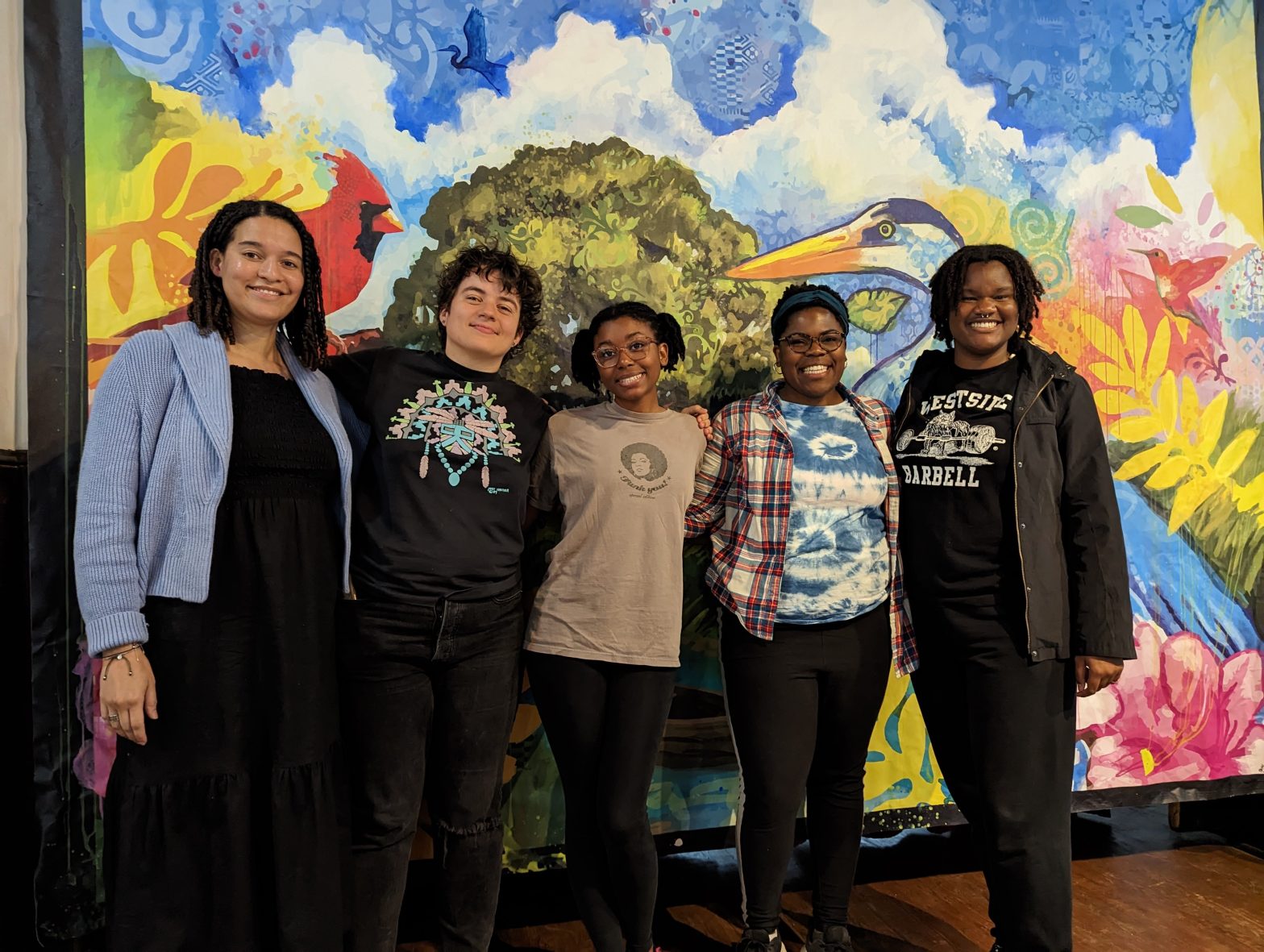How do you introduce students to a place like the Penn Center? This campus on St. Helena Island, South Carolina has transformed over time while retaining the ability to transport visitors to different moments in time: the 1862 founding of Penn School near the end of the Civil War; the 1951 founding of Penn Center near the beginning of the Civil Rights struggle.
In the nascent stage of course planning, Curator Chaitra Powell and I pondered the origin of a South Carolina community center’s archives, the Penn School Papers and the Penn Center Collection, arriving at a North Carolina repository in 1962 and remaining in this same out-of-state repository for over 60 years. The murky questions and inchoate answers that arose from our research inspired us to bring our students into the grey with us, to embark on an archive centered, inquiry-led 6-week course. Ideally, by the end of the maymester, the students would successfully apply their interests to their course work and come away with a clearer understanding of Penn Center and the institution that stewards the center’s records.

On the first day, each of the students came to class with different research interests: English and gender studies; nursing and health; computer programming and environmental science. Common points of excitement were visiting an African American landmark and activating the opportunity to learn more about Gullah and Geechee culture. Another point of excitement raised by the students was the opportunity to find self-reflections of black Americans within the Penn archives. I could immediately relate to their optimism of encountering positive images and narratives of black Americans—beyond situations of oppression and the struggles engendered by that oppression.

Two years prior to the class, I shared the students’ excitement to research (and eventually find) black self-perceptions within the Penn archives for my graduate thesis. I had constructed in my mind an imagined reality of what I hoped to find within the Penn archives: countless boxes documenting the thoughts and narratives of black and brown midwives, nurses, artisans. And what I actually found was the grey terrain so often housed within institutional archives: some documents pertaining to what I had hoped to find and a majority of the documents pertaining to the lives of those most aligned with the Penn School’s founders: the white Christian missionary way. When presented with the reality of the archival data, I re-directed my thesis research and attained a greater awareness of common shortcomings of institutional archives in discovering marginalized humanity.

I had worked through my frustrations since 2021 and retained a deep desire to not pass on unproductive cynicism to our students but instead, kind curiosity and inquisitive investigation. Some guiding questions for the students included: Why do the Penn School Papers retain so many photographs of black Americans, but so few of their written documents? In service of community driven archives, how can the Penn Center Collection be activated by rural black citizens threatened by big scale land development? By the time we arrived on St. Helena Island, the students had begun their research into Penn’s archives at Wilson Library, but to visit Penn Center, sleeping in the Benezet dorms and learning from Gullah and Geechee memory keepers, was a vital step in their learning. Alongside college students from South Carolina and Georgia, our students died cotton with indigo, listened to the wisdom a Civil Rights attorney and a Gullah medicine man, and achieved stillness on ground steeped in African American history.

Our time visiting St. Helena and maymester long archival research culminated in three final exhibit presentations and timelines outlining a topic of the students’ choice. Each student brought her unique take and interests to her final project and, to my happy surprise, the students weren’t jaded by archival voids—they had retained their optimism after visiting Penn Center. Even though the precarity of Penn Center remains, the community stakeholders and operators didn’t allow that precarity to hamper their hope for Penn’s future. In visiting a place of pride, the students’ were infused with that pride, exhibiting photographs and narratives braided together by archival research with disembodied documents and a visit to Penn Center that engaged their embodied, whole selves.

